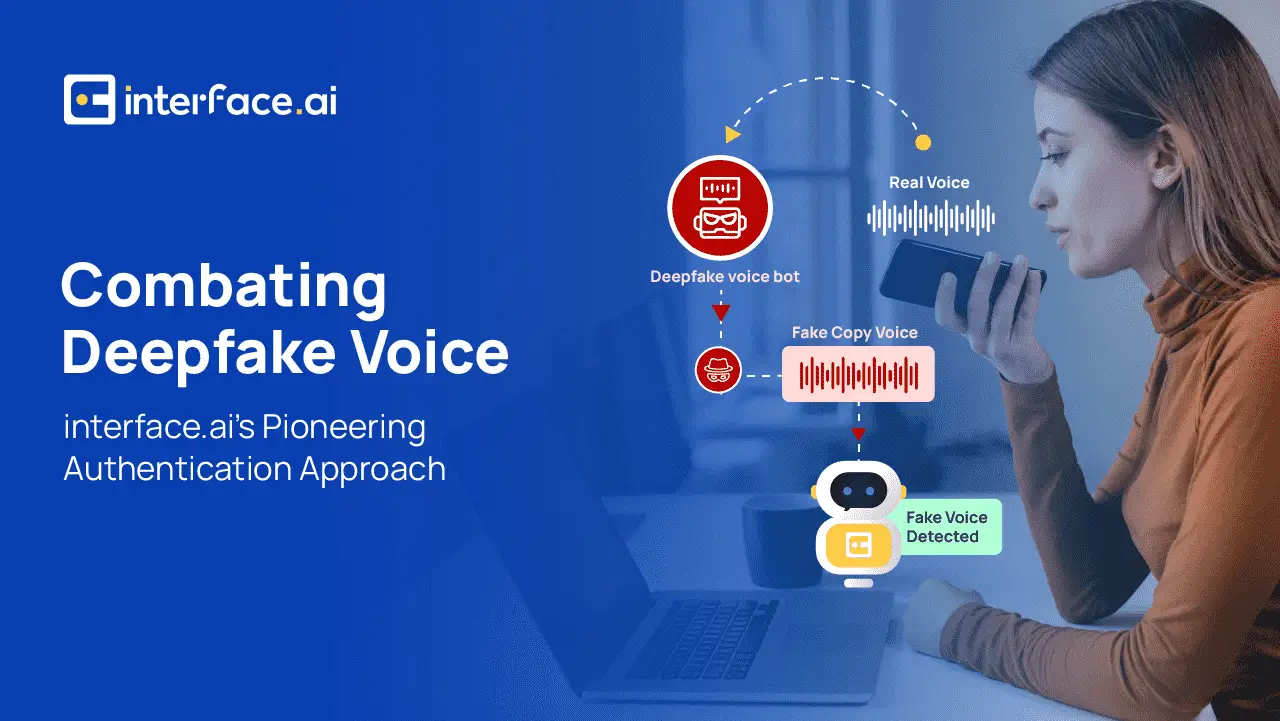
Combating Deepfake Voice: interface.ai’s Pioneering Authentication Approach
Deepfakes may have initially gained notoriety through manipulated celebrity videos, but it has since crossed into far more dangerous territories – particularly for financial services.
The threat of deepfake voice to financial services is multifaceted and urgent. From fraud and identity theft to reputational damage and financial manipulation, deepfake voice represents a huge challenge to voice security.
Understanding the gravity of this risk, interface.ai has developed the most advanced voice AI authentication system for financial services. This blog will delve into how interface.ai provides the highest standard of voice security and what it means for financial services.
interface.ai’s trifecta solution to deepfake voice in Financial Services
Most financial services voice AI solutions offer a range of authentication tools to verify identities and prevent unauthorized access. However, while many of these tools are essential components of voice security, they alone fall short in protecting against increasingly sophisticated deepfake voice AI threats.
To provide the highest levels of security, a voice solution must adopt a risk-based, multi-factor authentication solution that includes AI, biometrics, and caller anti-spoofing.
interface.ai is the only Voice AI built for financial services that delivers this highly-secure trifecta, alongside OTP (One-Time-Password), Magic Link, and both in-wallet and out-of-wallet questions. Consequently, interface.ai’s AI-powered multi-factor authentication system provides the most advanced voice security available to banks and credit unions.
1. AI
interface.ai’s voice security is driven by a risk-based model. interface.ai’s intelligent AI technology understands the nature and intent of the question and the associated risk-level. Based on this risk-level, the customer is authenticated by the appropriate authentication type. interface.ai has 3 major risk levels:
- No-risk: A customer asks for branch hours or their routing number, presenting no risk and requiring no authentication.
- Low-risk: A customer asks what their balance is. This presents some risk so dual-factor authentication is typically required.
- High-risk: A customer asks to transfer money between accounts or change personal information. This constitutes the highest risk and so demands multi-factor authentication, including caller anti-spoofing and biometrics, as well as OTP/Magic Link.
2. Voice and device biometrics
By analyzing a caller’s unique voiceprint, interface.ai’s advanced voice biometrics identifies the speaker by either active or passive method. This provides secure, personalized, and efficient interactions that safeguard and improve the user experience. Learn more about interface.ai’s voice biometrics and how it combats deepfake voice AI here.
interface.ai has now also launched device biometrics to add even greater security and convenience for users. Device biometrics uses fingerprint and facial recognition via a device to offer a highly secure and personal method of authentication. It reduces reliance on passwords or security questions, which are more vulnerable to fraud. It also creates a seamless experience where security doesn’t slow down the transaction or support process.
3. Caller anti-spoofing
By utilizing the industry’s most advanced inbound authentication solution, interface.ai delivers an anti-spoofing experience that verifies callers with the industry’s highest accuracy. The technology uses a multitude of algorithms (ie. call origination and call patterns) to analyze the call and prevent spoofing. Learn more about interface.ai’s advanced caller anti-spoofing solution here.
Wrap-up
In this age of deepfake voice and growing security threats, choosing voice AI with the most advanced security and authentication standards is critical. With a risk-based authentication model powered by AI, voice and device biometrics, and caller anti-spoofing, interface.ai provides the leading voice security for financial services.
To learn more about interface.ai’s Voice AI, get in touch with our AI experts today.
AI Insights for Credit Union & Community Bank Leaders
Join the monthly newsletter for all the latest industry updates

